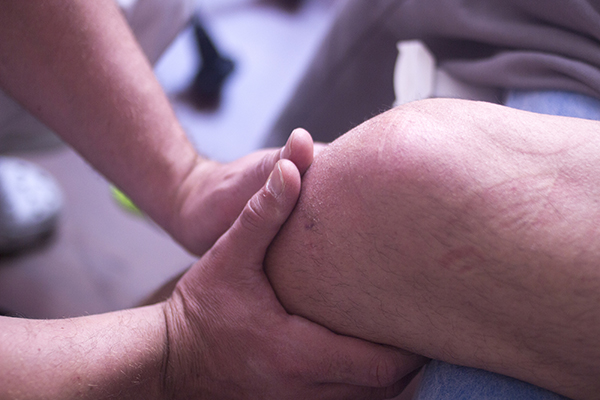It is estimated that between 3 and 5 million patients in the United States suffer with lymphedema, with a significant portion developing the disease as a consequence of cancer or its treatment. In oncology, the most common causative factor for lymphedema development is the impaired or disrupted pattern of lymphatic flow through draining vessels and nodes, typically as a consequence of surgery and/or radiation. Radiation and surgical excision of lymph nodes are two of the top three highest risk factors for Lymphedema development, along with obesity.
What is Lymphedema?
Lymphedema is marked by chronic and sometimes painful swelling. It occurs due to accumulation of lymph fluid in different areas of the body. Swelling most commonly occurs in the arms, legs, trunk, abdomen, head and neck, or external genitalia. Lymphedema may interfere with wound healing and increases the risk of infection. Those afflicted with swelling in the legs may experience difficulty walking. Swelling in the arm may result in a feeling of “heaviness” and it may be difficult to reach. Facial, neck, and intraoral swelling can affect swallowing, communication, and mobility. Lymphedema can result in decreased quality of life due to restricted use of the affected body part.
Types of Lymphedema
Lymphedema is categorized as either primary or secondary.
Primary Lymphedema is caused by an abnormality in the lymphatic system which is present at birth or may occur later in life.
Secondary Lymphedema is more common. It is often a side effect of cancer treatment (removal of lymph nodes and/or radiation) and can result in swelling due to blood clots, trauma, circulation problems (venous insufficiency), surgery, and infection.
Can Lymphedema be prevented?
Steps can be taken to reduce the risk of Lymphedema development. Healthy habits for patients at risk for Lymphedema development include the following:
- Healthy lifestyle – A healthy diet and exercise are important for overall good health.
- Skin care – Make sure that your skin is in good condition.
- Medical Check Ups – Find a certified Lymphedema therapist who can review your situation, prescribe compression garments and exercise as needed, screen for Lymphedema, and discuss personal risk factors.
- Infection Education – Know the signs of infection and what to do if you suspect you have one.
Try to Avoid Possible Triggers
- Injury or Trauma: Protect skin while doing activities that may cause skin injury (eg, wear gloves while washing dishes or gardening, wear shoes vs. barefoot, try to avoid punctures/injections).
- Limb constriction: Wear loose jewelry and clothing, avoid blood pressure cuffs on affected limb.
- Extreme Temperatures: Avoid exposure to extreme hot and cold for prolonged amounts of time.
- Prolonged Inactivity: Movement and exercise is key.
Risk Reduction and Lymphedema Treatment
Augusta University Health’s Lymphedema Risk Reduction and Treatment Program is the most comprehensive and extensive in the region. Complete treatment and education empowers patients to take control of their own recovery. Treatment provided by a nationally certified therapist at our Lymphedema Clinic includes:
- Comprehensive evaluation of each patient’s medical history, lymphedema, and functional limitations
- Lymphedema risk reduction education
- Manual lymphatic drainage
- Compression Bandaging
- Skin care program to prevent infection
- Exercise instruction
- Recommendation and fitting of compression garments
- Instruction/education for home program to build independence in self- management
- Pre-operative measurements to set baseline for those who meet criteria with continued follow up screenings to monitor for early development of Lymphedema





